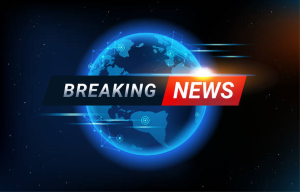In a notable transformation indicative of wider geopolitical trends, Boeing is expanding its engineering recruitment significantly in India rather than in China. This adjustment arises as the United States aims to lessen its dependence on Chinese expertise in light of escalating geopolitical apprehensions.
Boeing is hiring nearly 20 times more engineers in India than in China, according to a report on August 1 by the Hong Kong-based South China Morning Post (SCMP).
As of July 31, the Boeing Careers website showed only five job openings in China, three of which were in engineering. In contrast, India had 83 job openings, with 58 dedicated to engineering positions. This disparity has remained consistent for at least a couple of weeks.
Boeing’s current employment statistics further highlight this trend. The aerospace giant has around 2,200 employees in China, compared to more than 6,000 in India. This is despite the fact that India’s total commercial aviation fleet is only about one-sixth the size of China’s.
The shift is particularly striking given Boeing’s historical connection to Chinese talent. Wong Tsu, Boeing’s first aeronautical engineer, was born in Beijing.
AfriPrime App link: FREE to download...
https://www.amazon.com/Africircle-AfriPrime/dp/B0D2M3F2JT
Hired in 1916 after graduating from the Massachusetts Institute of Technology (MIT), Wong played a pivotal role in designing Boeing’s first financially successful aircraft, the Model C naval training seaplane. That achievement set the stage for Boeing to develop its first dedicated passenger planes a decade later.
Tom Crouch, curator emeritus at the Smithsonian’s National Air and Space Museum and author of several aviation history books, noted Wong’s significant impact on Boeing’s early success.
“The Model C was not only Boeing’s first production order, it was the first Boeing aircraft to be produced in large numbers and sold,” Crouch said. “Wong Tsu put the company on the map.”
Despite his key contributions, Wong spent only ten months at Boeing, leaving for China shortly before the Model C’s Navy test flights. In Seattle, Wong’s contributions are commemorated at the Museum of Flight, where a permanent exhibit honors his work.
In China, he founded the country’s first airplane factory in Fuzhou in 1917 and later headed the Aviation Research Academy in 1945, earning recognition as one of the founding fathers of Chinese aviation.
Boeing Shifts Focus From China To India
Boeing’s relationship with the Chinese aviation market began in the early 1970s, sparked by a historic visit from then-US President Richard Nixon. This engagement led to the establishment of multiple joint ventures in China, including engineering, maintenance, and research centers, as well as a 737 completion and delivery center.
Over the years, parts and assemblies for over 10,000 Boeing planes worldwide have been produced in China, with notable collaborations such as the 737 Completion and Delivery Centre in Zhoushan, Zhejiang province.
However, the landscape has dramatically shifted for Boeing following two catastrophic crashes involving its 737 Max aircraft—one in Indonesia in 2018 and another in Ethiopia in 2019.
These incidents, which resulted in the grounding of the 737 Max fleet and severely damaged Boeing’s reputation, have been compounded by further safety concerns, including instances of wheels falling off planes and a mid-air panel blowout on a 737 Max aircraft.
Despite Boeing recently resuming deliveries of the 737 Max to China after addressing safety issues, the company’s relationship with China remains fraught.
AfriPrime App link: FREE to download...
https://www.amazon.com/Africircle-AfriPrime/dp/B0D2M3F2JT

This resumption comes after intermittent deliveries since 2019, during which time US-China tensions have escalated over various issues, including technology and national security.
Compounding Boeing’s challenges, China has developed its passenger jet, the C919, through the Commercial Aircraft Corporation of China (Comac), aiming to capture market share from both Boeing and Airbus.
China is poised to become the world’s largest aviation market over the next two decades, with an estimated requirement of 8,830 aircraft deliveries by 2043, as per Boeing’s 2024 Commercial Market Outlook.
Adding to Boeing’s woes, China has increasingly favored Airbus over Boeing for its new fleet acquisitions, pushing Boeing to seek growth opportunities elsewhere.
This shift has driven Boeing to strategically pivot towards India, a country with a burgeoning pool of engineering talent and a rapidly growing aviation market.
India, now the world’s third-largest domestic airline market, trailing only the US and China, is set to require 2,835 aircraft deliveries by 2043.
Boeing’s increased focus on India is part of a broader strategy to reduce dependence on China while tapping into India’s engineering capabilities. This aligns with India’s ambitions to position itself as an alternative to China for technology and manufacturing.
In January, Boeing inaugurated its largest facility outside the US in Bengaluru, investing approximately $200 million in the Boeing India Engineering and Technology Centre (BIETC).
Following this, in February, Boeing announced plans to establish a new logistics center in India to better serve its regional customers. Boeing’s forecasts suggest that Indian airlines will need over 2,200 new aircraft in the coming two decades, bolstered by India’s swift recovery from the pandemic.
India’s domestic air traffic is projected to have the highest growth rate globally for the next two decades. From 2019 to 2042, the average annual revenue passenger kilometers for India’s domestic routes is expected to increase by 7.4%.
This growth rate exceeds the 6% forecasted for emerging Asian economies and the 5.3% predicted for China’s domestic routes.
Air India, Boeing’s oldest customer in the region, is expected to order hundreds of new narrowbody and widebody jets as it expands its operations. This growing partnership with Indian aviation firms is a testament to Boeing’s strategic shift towards India.
AfriPrime App link: FREE to download...


